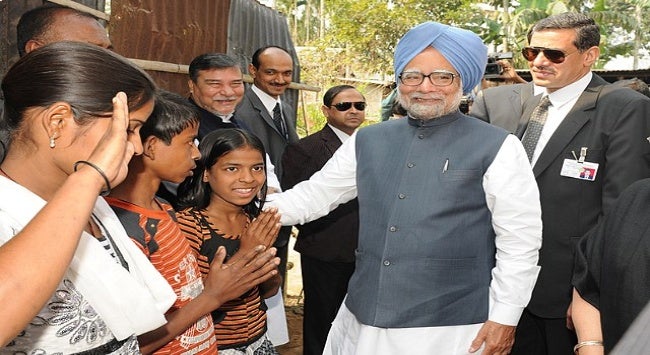Summary
Dr Manmohan Singh changed India’s destiny by introducing economic reforms and managing them inclusively. His irreversible policies have contributed to India’s economic shine and strategic prominence.
“No power on earth can stop an idea whose time has come. The emergence of India as a major economic power is one such idea.” Dr Manmohan Singh quoted celebrated novelist Victor Hugo while presenting his maiden budget as India’s Finance Minister to the Indian Parliament on 24 July 1991. The Budget was presented against the backdrop of the gravest economic crisis faced by independent India. The country’s foreign exchange reserves were alarmingly low and the external debt situation precarious. The external sector crisis was compounded by domestic indebtedness with government borrowings reaching record high. With gross domestic product growth sliding southward, there were few who would have taken Singh’s words by their face value.
By his own admission, Singh did not have a ‘magic wand’ for turning around the economy. Within a year of his assuming office though, India’s economic growth recovered and stayed well above the ‘Hindu rate of growth’ of four per cent for the whole of his tenure in office. The recovery in growth was accompanied by robust improvement in foreign exchange reserves buoyed by rising exports, remittances and foreign investment inflows. External and internal debts were reined in, with credit ratings turning bullish on India as the country begun being viewed at as an attractive destination for both long-term foreign direct investment as well as short-term capital market portfolios.
The 1990s saw several economies of the world undergoing far-reaching economic transformations. These included Russia and the East European economies that were part of the erstwhile Soviet Union. China, which had already begun liberalising from the late 1970s, also accelerated domestic reforms in the 1990s. For almost all of these economies, economic reforms were the consequences of drastic political changes. The transition to market-oriented economies from tightly state controlled ones entailed significant hardships for the people through unavoidable pains of adjustment. Even in China, notwithstanding political continuity, there were pains, particularly from reforms in agriculture and state-owned enterprises.
India, however, was an example of economic transition with hardly any adjustment costs. Singh’s economic management ensured that while private enterprises were given the opportunity and room to flourish, the gradual withdrawal of the state from industrial production and service delivery created as little hardship as possible for the common man. It is this ‘humane’ approach to reforms that is a hallmark of Singh’s legacy as finance minister.
The humane approach of Singh made sure that economic reforms stayed on course, notwithstanding bipartisan political opposition. Indian states and political leaders, many of whom considered Singh’s policies as politically suicidal, gradually begun seeing merit in his ideas. The realisation that the abolition of controls on industrial production; allowing private and foreign investment in sectors reserved for state enterprises; enabling competition in strategic industries like banking, insurance and telecommunication; and capping wasteful public expenditure were going to help people the way they never were, made India’s economic reforms politically legitimate.
The biggest validation of Singh’s policies is the fact that even after he ceased to be the finance minister, his policies were not reversed by future governments. In his inimitable quiet and resolute manner, he was able to convince all stakeholders about the long-term merits of his moves. It was he who made sure that good economics was not necessarily bad politics.
As India’s Prime Minister from 2004 to 2014, Singh’s economic vision emphasised on strengthening the humane aspect of the reforms he had launched a decade ago. Distributive justice was the overarching objective of his public policies as he legislated employment guarantee and food security. At the same time, there was no turning back on efforts to introduce more market-based mechanisms in the economy to maintain high growth. This balancing between two challenging and often conflicting goals of public policy in a large and populous developing country like India was not always successful. However, the persistence with the resolve has ensured that public policy in India has continued to maintain inclusivity as its core feature.
India would have probably remained an idea whose time would have never come had it not been for Singh. The strategic weight that India commands in today’s world is primarily due to its economic sheen. For brightening the shine, it is essential to carry forward the work that Singh began. That would be the most fitting tribute to the man who changed India’s destiny.
. . . . .
Dr Amitendu Palit is a Senior Research Fellow and Research Lead (Trade and Economics) at the Institute of South Asian Studies (ISAS), an autonomous research institute at the National University of Singapore (NUS). He can be contacted at isasap@nus.edu.sg. The author bears full responsibility for the facts cited and opinions expressed in this paper.
Picture credit: https://commons.wikimedia.org/w/index.php?search=manmohan+singh+&title=Special:MediaSearch&go=Go&type=image
-
 More From :
More From :
-
 Tags :
Tags :
-
 Download PDF
Download PDF



